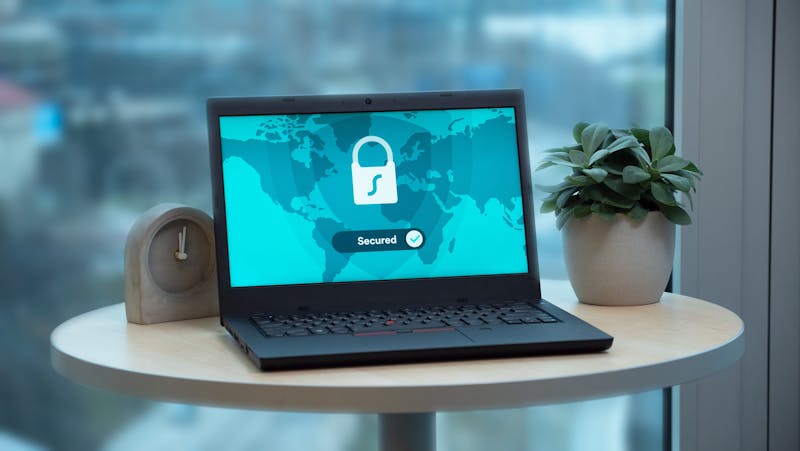Will Blockchain change the Internet?
Blockchain has been touted as the future of everything. From the Internet, banks, passwords, and ride-sharing, futurists and tech pundits have found a way to reimagine whole industries around blockchain technology. Some experts even believe that the tech will become “as necessary as electricity”.
Today, blockchain remains the domain of tech enthusiasts, large IT enterprises, and cryptocurrency investors. For a technology that’s supposed to change the way we manage money, buy goods, and behave online, most people haven’t even heard of it and relatively few even have a basic idea of how it works.
In this article, I’ll explore the basics of blockchain technology, why it’s so important, and which industries are already investing millions in laying the framework for a blockchain-powered future.
Blockchain 101
A lot has been written and said about blockchain—but the mountain of terminology that exists can be hard to parse for those who don’t come from technical backgrounds.
Here’s a definition that is as jargon-less as it gets from Harvard Business Review:
“…blockchain is an open, distributed ledger that can record transactions between two parties efficiently and in a verifiable and permanent way.”
However, this still doesn’t explain what blockchain does. To better understand the technology, let’s further break this statement down.
How is it efficient?
Most of us pay third-parties like Paypal to navigate commerce for us. Although convenient, these companies charge substantial service fees. With blockchain, the transaction happens directly between the two parties, much like the barter systems of old. You can pay your bills, buy pizza, or shop online without your bank facilitating the exchange of funds from your account to the seller.
How is it verifiable?
Essentially, blockchain is a ledger formed by data entries called “blocks”. Every time you add or edit information, another block gets added to the chain. Each block is stamped with a unique code that cannot be duplicated or altered. Thanks to this immutability, all activity is reviewable to everyone participating in the blockchain. While the personal identities on blockchain remain anonymous, anyone can review each transaction and trace activity to specific wallet addresses.
How is it permanent?
While transactions are not unchangeable, they are tamper-evident. The unique signatures assigned to each block change every time information is altered. The action works for every block that is strung along the chain–edit just one entry and the whole chain reflects the change. There would be no way to game the records without everybody knowing it was tampered with, effectively blocking any attempts to hack the system.
Why are these traits critical?
Transactions hinge on trust, and trust used to be simple. Under the ancient barter system, you simply exchanged one item for another, trusting that both parties agree on value. But as populations grew so too did the extent of trade. As such our exchange systems evolved with the birth of currency, a system of purchasing goods through the use of coins, whose value was underwritten by the state. People began to hire brokers and adopt fixed pricing models and credit systems to organise the sprawling complexity of trade, leading to the birth of modern banks as we know them.
Banking may have made trade more convenient, but our reliance on these institutions has created a massive vulnerability. The imbalance of power enables the lack of transparency, and weak fail-safes should banks collapse. We need only go back to the banking crisis of 2007 to see first-hand the crippling effects of bank failures on economies.
Blockchain in many ways is the antithesis to this system, due to its inherent decentralised nature. Instead of all the data being stored in the computers of a small group of powerful banks, it’s copied onto every computer that participates in the blockchain. The data remains whole and unharmed even when one node fails.
All of these properties make blockchain a very appealing solution to major problems in several industries. The tech is also poised to completely change the way we interact online. Let’s look at some examples…
Internet: The promise of security and interconnectivity
Data is the premium currency that fuels today’s digital society. We hand over personal details in exchange for better, personalised services and trust that companies can keep our data locked tight. But massive data breaches that compromise millions, or even billions, of people at companies like Facebook and Yahoo prove we’re far from secure. Incidents like these show the urgent need for transparency and better protection against increasingly sophisticated cybercriminals.
Blockchain can effectively usher in a new era of Internet security and privacy. Dubbed Web 3.0, it is an Internet free from the rampant fraud and identity theft that plagues it today. By introducing blockchain to the Internet of Things, we can create a single online identity that ties all of our data together, significantly increasing accountability, security, as well as convenience. No more need for separate passwords and accounts for every single website or app we use.
Finance: The promise of true transparency
Blockchain was initially conceptualised as a system for managing and creating the cryptocurrency, Bitcoin. Obviously, the most obvious use case for blockchain would be for managing money and assets.
One of the biggest ways blockchain can impact finance is through cutting through bank service costs. Most customers rely on their brokers to handle the complicated and time-consuming process of asset management. Blockchain can streamline products like private and public stock trading, loans, and bonds with a transparent record that eliminates ambiguity for consumers and reduces costly checks and balances for banks.
Another way is through smart contracts. Asset transfers require the involvement of many parties and stacks of documents before changing hands. The process is cumbersome, and leaves many holes that can be manipulated by bad actors. Smart contracts that levy blockchain can autonomously manage multiple documents simultaneously, only handing off once certain criteria are met, expediting the exchange of goods and reducing human error.
Supply Chain: The promise of better food safety
Adopting blockchain will help food retailers trace spoiled products to the source in record time. In the recent outbreak of e. Coli in the US, companies took weeks to trace the source of infected lettuce. By then, hundreds of people had fallen ill, and millions’ worth of crops had been destroyed.
The transparency will make for better accountability and consumer safety. “It’s very hard for a retailer like Walmart or any retailer…or for that matter, a consumer, to pick up a food item and know with certainty where it came from and how it traveled from farm to store,” says Frank Yiannas, Walmart’s vice president of food safety. Walmart is one of the nine food retail giants who joined IBM’s Food Trust Solution, an initiative that aims to improve food safety through blockchain tech.
Healthcare: The promise of accurate care
Healthcare has a messy records problem that directly affects patients. Most patient information is still stored away in separate data silos. Information critical to administering proper care, like socioeconomic status, patient behaviours, and treatment data already exist. They’re just floating around in doctor’s notes, filing cabinets, multiple electronic databases, the cloud—separated where they can’t communicate with one another.
This inefficiency puts patients at risk of getting subpar, or worse, the wrong treatment. According to the director of the Center for Biomedical Informatics Shaun Grannis, up to one in five patient records don’t match up within the same system. A private blockchain for medical records can finally break the information floodgates open and stitch together a single comprehensive medical record for better diagnosis.
Blockchain’s promise, an immutable transaction system that is tamper-proof and gives control back to the users, naturally positions it as the solution to difficult, widespread problems in many industries. One can argue that the technology isn’t as much disrupting things as they are as it is the future–of the Internet, of trade, of the digital age.
The Rubik’s Cube is the most popular puzzle. Learn the easiest solution here.






